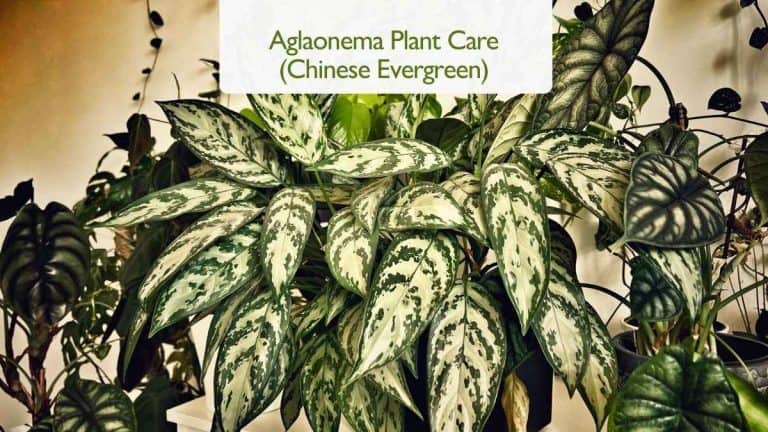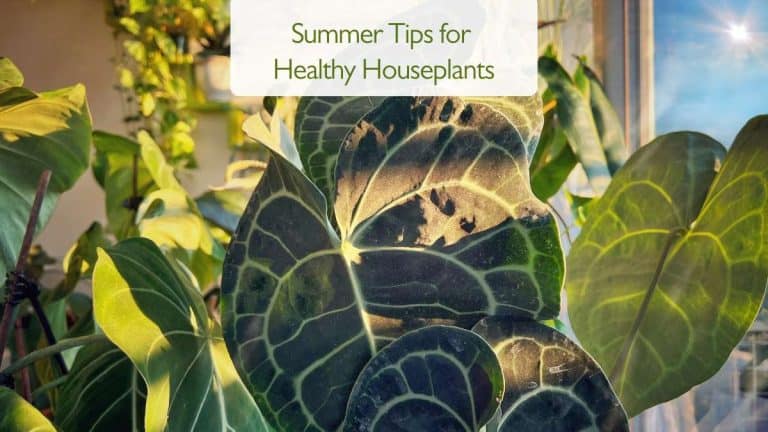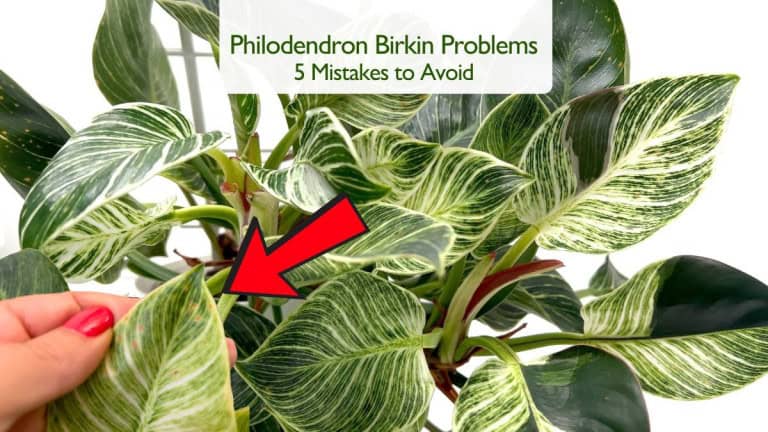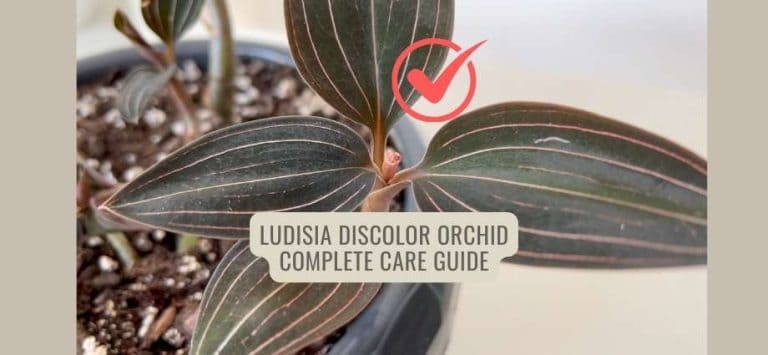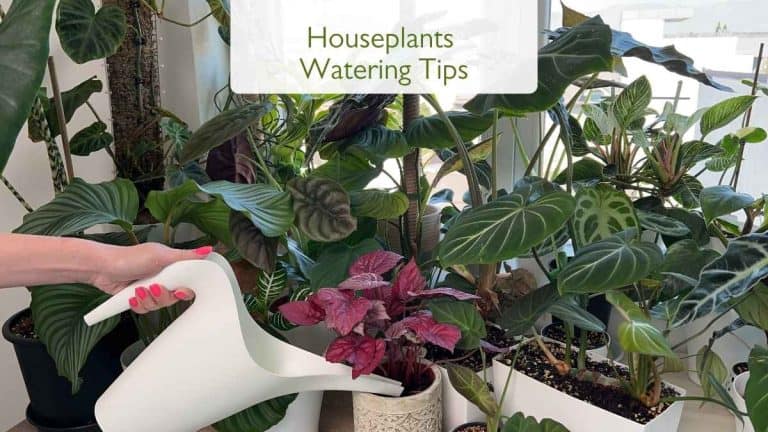Aglaonema Plant Care – All You Need To Know about Chinese Evergreen Plant
Looking for a houseplant that thrives where others don’t? Aglaonema plant care (the beloved Chinese Evergreen) is refreshingly simple: give steady, indirect light, even moisture, and stable warmth, and it will reward you with glossy leaves splashed in silver, green, and pink. Whether your space is bright or a bit dim, this low-light star brings color without drama. In this guide, you’ll learn exactly how to handle light, watering, soil, feeding, repotting, and propagation – plus quick fixes for yellow leaves, brown tips, and legginess – so your Aglaonema stays vibrant year-round.
Prefer visuals? Press play below for my step-by-step Aglaonema plant care video:
Click here to watch the video on YouTube
Light Requirements for Aglaonema Plant Care
Aglaonema tolerates low to medium light, which makes it ideal for dim corners, but it truly thrives in bright, indirect light.
- Dark green/silver varieties handle lower light best.
- Pink/red variegated types need more brightness to keep their color.
Avoid harsh, direct midday sun – it can bleach patterns and crisp the edges. If growth is leggy or colors fade, move closer to a bright window with filtered light or add a soft grow light.
Watering: Evenly Moist, Never Soggy
Watering is the #1 place people go wrong in Aglaonema plant care. Let the top 1–2 inches (2–5 cm) of soil dry, then water thoroughly and allow excess to drain.
- Overwatered: yellowing lower leaves, constantly wet soil, sour smell.
- Underwatered: drooping, dry edges, soil pulling from the pot sides.
Tip: Aglaonema can be sensitive to fluoride/salts in tap water (brown tips). If you notice this, switch to filtered, distilled, or let tap water sit 24 hours before use.
Soil Mix: Light, Airy, and Well-Draining
A breathable mix prevents root issues while holding gentle moisture. For dependable Aglaonema plant care, try:
- 60% high-quality houseplant mix (peat or coco-based)
- 25% perlite or pumice
- 15% fine orchid bark (optional)
This balance keeps roots oxygenated and reduces the risk of rot, especially in lower-light placements. If you are interested to make your own potting mix for aroids, read more here.
Humidity & Temperature – Aglaonema Plant Care
Aglaonema loves moderate humidity (45–60%) and stable warmth.
- Temperature: 65–80°F (18–27°C) is perfect.
- Keep away from cold drafts, heat vents, or AC blasts – sudden swings cause leaf drop.
- In dry seasons, group plants, use a pebble tray, or run a small humidifier.
Fertilizing for Steady, Colorful Growth
Feed lightly during spring–summer: a balanced liquid fertilizer at ½ strength every 4–6 weeks. Skip feeding in winter when growth naturally slows. Over-fertilizing can burn margins – especially on lighter variegation – so less is more.
Aglaonema Flowering
Chinese Evergreens can bloom indoors! When Aglaonema plant care is on point (steady light, even moisture, and warmth), mature plants may produce small, pale green/cream flowers made of a spathe and spadix (similar to a Peace Lily). Blooms usually appear in spring/summer and are more of a curiosity than a showpiece, but they’re a great sign your plant is happy.

Should you keep or remove the blooms?
- If your goal is lush foliage, snip blooms off at the base with sterilized scissors to redirect energy into leaves and new growth.
- If you’re curious about the full life cycle (and possible berries), you can leave them—but expect overall growth to slow a bit.
Aglaonema Plant Care tweaks during flowering:
Keep bright, indirect light; water when the top 1–2″ of mix is dry; and use a gentle, balanced fertilizer during active growth. Avoid harsh, direct sun on leaves or flowers. If pollen bothers you, simply prune the bloom early. Watch it bloom: see my quick Shorts clip:
Potting & Repotting
Aglaonema is a moderate, clump-forming grower and doesn’t mind being slightly root-bound. Repot every 2–3 years or when:
- Roots circle heavily at the bottom
- Water rushes through without absorbing
- Growth stalls despite good care
Choose a pot only 1–2 inches (2–5 cm) wider than the current one and refresh with your airy mix.
Pruning & Grooming
Keep the plant lush by:
- Snipping yellow or tired lower leaves at the base
- Pruning leggy stems back to a node to encourage a fuller silhouette
- Wiping leaves monthly with a damp cloth to remove dust (better photosynthesis and fewer pests)
Propagation (Easiest: Division)
The simplest way to multiply Aglaonema is division:
- Slide the plant out during repotting and gently tease apart clumps, ensuring each division has roots and a few healthy stems.
- Pot each division into fresh mix, water lightly, and keep in bright, indirect light.
You can also root stem cuttings (with a node) in water or moist mix – warmer temps and medium humidity speed it up.

Common Problems & Quick Fixes
- Yellow leaves (bottom first): Commonly overwatering or natural aging. Check drainage and watering cadence.
- Brown tips/edges: Low humidity, underwatering, or fluoride/salt sensitivity – boost humidity and switch water source.
- Leggy, pale growth: Not enough light – move closer to bright, indirect light.
- Sudden leaf drop: Cold draft or temperature shock – stabilize conditions.
- Leaf spots: Splashing leaves + cool temps can invite fungal/bacterial spots. Water the soil, not the foliage, and improve airflow.
Pests & Prevention – Aglaonema Plant Care
Aglaonema is generally resilient, but mealybugs, scale, and spider mites can appear. Inspect undersides of leaves and along stems every week or two.
- Wipe leaves with a damp cloth.
- Treat early with insecticidal soap or neem oil.
Are Aglaonema Plants Toxic?
Yes – like many aroids, they contain calcium oxalate crystals. Keep out of reach of pets and children who like to nibble. If you have a pet-focused audience, link to your pet-safe houseplants article.
Variety Notes (Pick by Light & Color)
- Silver Bay, Maria, Cutlass: Best for medium to lower light; cool silver-green tones.
- Red/Pink varieties (Siam, Red Valentine): Need brighter indirect light to maintain bold color.
- Pictum Tricolor (rare): Stunning camo pattern; keep bright, indirect light and steady warmth.
Choosing a type that matches your light level makes Aglaonema plant care effortless.
Aglaonema plant care Seasonal Routine (At-a-Glance)
- Spring: Resume light feeding; repot/divide if needed.
- Summer: Maintain humidity; watch watering cadence; rotate for even growth.
- Autumn: Taper fertilizer; reduce watering frequency as growth slows.
- Winter: Maximize light; avoid drafts; water less but don’t let it bone-dry for long.
Final Thoughts
When you nail the basics – moderate light, even moisture, airy soil, and stable warmth – Aglaonema becomes one of the easiest, most rewarding houseplants you can grow. From deep silvers to neon pinks, good Aglaonema plant care lets those colors shine while keeping maintenance low and growth steady.
Explore More Music for Your Plants & Stay Connected!
Check out my Playlist: Music for Plants and find the perfect tunes to help your plants and yourself thrive.
Don’t forget to visit my YouTube Channel Plant House & Garden and subscribe — your support means the world to me!
Connect with me on social media for more plant care tips and music updates: Instagram | Facebook | X | Pinterest | Reddit | TikTok
Love plants? Love music? Don’t miss out on new updates — hit subscribe and follow now to keep your plants happy and your space vibrant!

